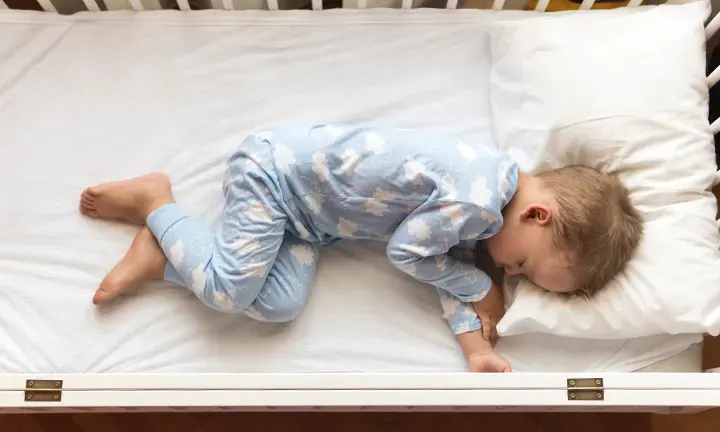Understanding the Differences Between Bassinets, Cots, Cribs, and Cradles
Welcoming a newborn into the family brings joy, excitement, and a long list of preparations. Among the most important decisions new parents face is selecting a safe and comfortable sleeping arrangement for their baby. With a range of options available—bassinets, cribs, cots, and cradles—knowing the differences can help you make the right choice based on your baby's age, safety needs, and your living space. In this guide, we break down the key distinctions between these baby sleep products, helping you make an informed and confident decision.
What Is a Bassinet?
A bassinet is a small, portable bed designed specifically for newborns, usually suitable from birth to around four to six months. Bassinets are known for their compact design, making them ideal for parents who wish to keep their baby close by during the early months. They often come with a hood or canopy and are elevated on a stand for easy access.
Pros of Bassinets:
Compact and space-saving
Lightweight and portable
Easy to place beside your bed
Ideal for newborns in the early months
Cons:
Short usage period (outgrown by 4–6 months)
Not suitable once the baby begins rolling or pushing up
What Is a Cot?
A cot is a larger, sturdy sleeping space designed for infants and toddlers, usually suitable from around six months up to three years or more, depending on the design. Cots often come with adjustable mattress heights and safety rails and are typically placed in the baby’s room.
Pros of Cots:
Long-term use
Adjustable mattress levels
Solid and stable
Some models convert to toddler beds
Cons:
Occupies more space
Less portable than bassinets or cradles
Bassinet vs Cot: Which One Should You Choose?
When comparing a bassinet vs cot, the key differences lie in usage duration and mobility. A bassinet is ideal for newborns who need frequent feeding and monitoring, allowing parents to keep their baby close by during the night. However, it’s only suitable for the first few months.
A cot, on the other hand, is a more permanent solution. While not as portable, it serves your child for a longer period and offers better safety features for older babies. In most cases, parents start with a bassinet for the first few months and transition to a cot as the baby grows.
What Is a Crib?
Cribs are a staple in nurseries and are similar to cots in terms of function but may differ in regional naming or specific design features. In many regions, the term “crib” is synonymous with “cot,” while in others, a crib refers to a smaller, sometimes more ornate or traditional sleeping space. Modern cribs come with features like adjustable mattress height, teething rails, and the ability to convert into toddler beds or daybeds, making them a long-term investment for many families.
Pros of Cribs:
Sturdy and safe
Long-term usability
Convertible designs
Variety of styles and materials
Cons:
Heavier and less portable
Can be more expensive than other options
Bassinet vs Crib: What's the Difference?
The bassinet vs crib comparison is another common dilemma for parents. Bassinets are compact, easy to move, and perfect for the newborn phase. Cribs, however, offer more durability and a longer lifespan, making them suitable from infancy through toddlerhood and even beyond with convertible models.
If you're short on space and plan to keep your baby in your room initially, a bassinet may be a more practical choice. But if you’re looking for a long-term sleep solution and have a separate nursery, a crib is a better investment.
Another point in the bassinet vs crib debate is safety. Both options meet safety standards, but parents must consider their baby’s mobility. Once a baby begins to roll or sit up, bassinets become unsafe, and transitioning to a crib is essential.
What Is a Cradle?
A cradle is a traditional baby bed designed to gently rock or glide, soothing babies to sleep. Cradles are typically used from birth until around six months of age or until the baby can roll over. They are larger than bassinets but smaller than cribs or cots and often feature curved legs or mechanisms that allow for rocking motion.
Pros of Cradles:
Gentle rocking helps soothe fussy babies
Stylish and often made from high-quality wood
Suitable for the early months
Cons:
Limited usage time
Less common and often more expensive
Crib vs Cradle: Which One Is Better?
When considering crib vs cradle, the decision often depends on your baby's temperament and your preference for functionality vs. aesthetics. Cradles offer a calming rocking motion that can help newborns fall asleep more easily. However, they’re outgrown quickly and may not offer the same safety features or longevity as cribs.
Cribs, in contrast, are built for the long haul. They do not rock but are far more versatile in terms of usage duration. The crib vs cradle debate often comes down to whether you want a long-term solution or a comforting, short-term sleep option.
Crib vs Cot: Are They the Same?
In many countries, crib vs cot is a matter of terminology. In the UK and Australia, “cot” is used to describe what is known as a “crib” in the US. However, in some contexts, subtle design differences may exist, such as sizing or aesthetic elements.
From a functional standpoint, both cribs and cots serve the same purpose: to provide a secure and comfortable sleeping environment for babies and toddlers. Some cots may be slightly smaller and more minimal in design, while cribs can be more elaborate and convertible.
If you're navigating crib vs cot differences while shopping online, it’s important to look at dimensions and features rather than getting caught up in the naming convention.
Bassinet vs Crib: When to Make the Switch
The bassinet vs crib decision doesn’t have to be final. Many parents use a bassinet during the first 4–6 months when their baby needs frequent night-time care. Once the baby becomes more mobile, switching to a crib ensures safety and offers more space for growing babies.
Always transition before your baby shows signs of rolling over or pulling up. Cribs are built to support older babies with features like adjustable mattress levels and sturdy construction.
Key Factors to Consider When Choosing
When deciding between a bassinet vs cot, crib vs cradle, or other combinations, keep the following factors in mind:
1. Baby’s Age and Mobility
Bassinets and cradles are ideal for newborns, while cots and cribs suit older, more active babies.
2. Space Availability
Bassinets and cradles are compact, perfect for bedside use. Cribs and cots require more space, often placed in the nursery.
3. Budget
Bassinets and cradles are generally cheaper but have shorter usability. Cribs and cots are long-term investments.
4. Portability
If you need a mobile option, bassinets and cradles win. Cribs and cots are usually fixed and heavier.
5. Safety Standards
Always ensure that the product meets national or international safety certifications, with features like breathable sides, firm mattresses, and secure railings.
Key Takeaway
Selecting the right sleeping option for your baby involves understanding both your child’s developmental needs and your home environment. Whether you're weighing bassinet vs cot, crib vs cradle, or navigating the terminology of crib vs cot, each choice has its place in your baby’s journey.
Start with a bassinet or cradle for the early months, then transition to a cot or crib for long-term comfort and safety. By understanding the strengths and limitations of each, you can create a safe and soothing sleep environment that evolves with your child.
FAQs
A bassinet is a smaller, portable sleep space suitable for newborns up to 4–6 months, while a crib is larger, stationary, and can be used until your baby becomes a toddler.


